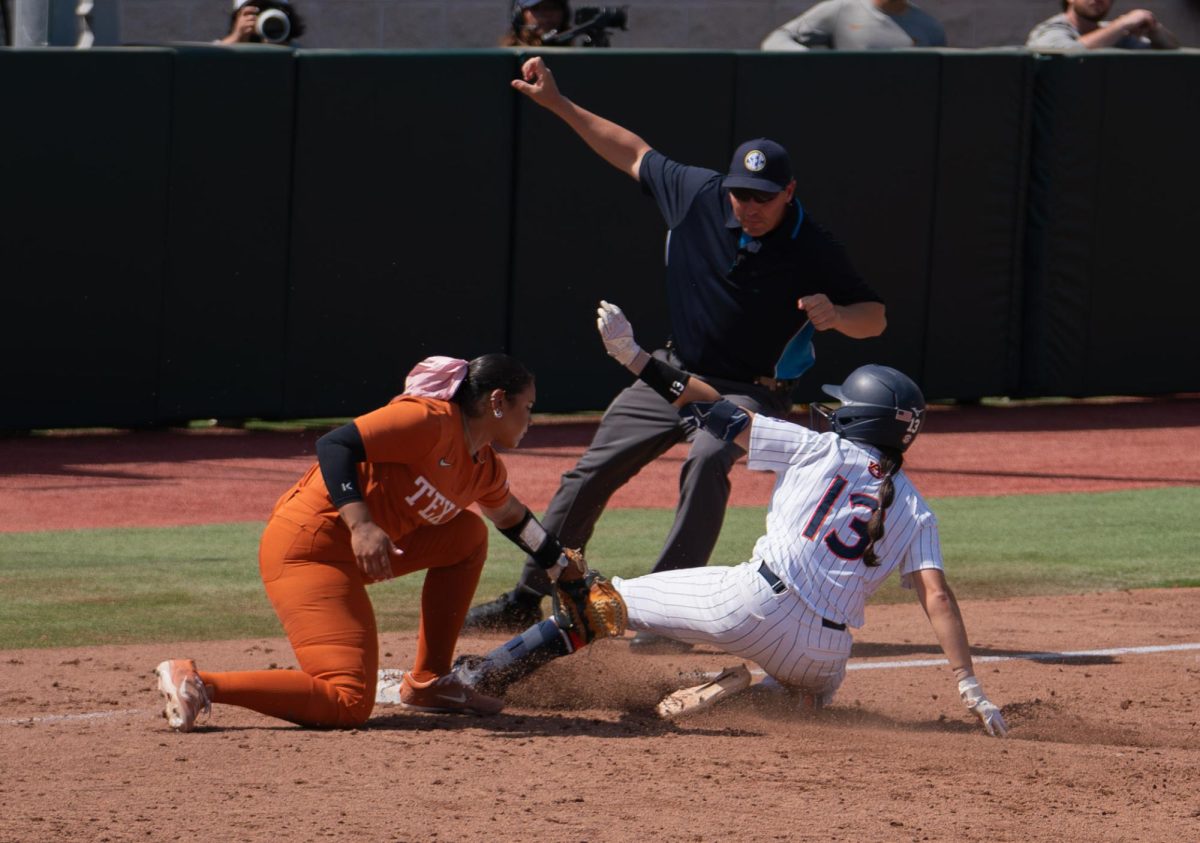The Longhorns will face upward of 35 opponents, each with their own style this season. Oftentimes, they have less than a week to prepare for a game, which can be tricky, especially if they don’t play the opposing team regularly. Texas has developed an effective method for preparing for a game that has already proven effective for the undefeated Longhorns.
Step 1: They have to figure out their opponent’s strengths and weaknesses. During the week prior to a game, the Longhorns watch video of their next opponent. They figure out how the other team bats — Are they conservative or risky? Are they right- or left-handed?
“We’ll look at video and look at the hitter’s strengths and weaknesses,” said freshman pitcher Rachel Fox. “[We then pick] certain pitches to get the effects that we want.”
The Longhorns also learn about the pitchers they are facing. For example, Wisconsin’s starter Meghan Mcintosh is left-handed. That knowledge affects a right-handed and a left-handed batter differently.
“I think about what a lefty would normally throw to me on a daily basis,” said left-handed freshman Brejae Washington. “Probably an inside curve or something else inside.”
For a right-handed batter, it’s the opposite analysis.
Pitchers have a favorite set of pitches that they rely on. An experienced batter can use this knowledge to predict what pitch might be coming if the count is full or if the pitcher is desperate.
The coaches also have their own notes that come from additional videos or from experience playing the other team.
“Coach Clark has been here 15 years, so she has faced a bunch of the teams that we play,” Fox said. “She knows their weaknesses, and we try to focus on that and go right at them.”
Step 2: They put it into practice. To be able to perform in a game, Texas takes what it’s analyzed and applies it. Sophomore Taylor Hoagland stresses that using these notes and improving on past performances is crucial in practice.
Hitters also have the opportunity to prepare for a pitcher. Batters practice against a pitching machine that can imitate the opposing pitcher.
Pitchers and hitters are not the only positions analyzed. A poor infield can motivate a hitter to hit short ground balls to get a batter to first, while a great defensive team can lead to power hitting.
Step 3: The Longhorns apply what they have practiced to game-time situations. Game day ignites nerves in players regardless of experience level and can lead to mistakes.
“Mentally, you have [to] really be prepared so you don’t think as much and just play the game,” Washington said. “[You need to] react to different situations and be able to adjust.”
The proper mental outlook can come in different forms for different positions. A pitcher who is frazzled needs to remember to take each pitch as it comes. If she gives up a hit, she needs to be able to see that a new batter is a fresh opportunity to get an out.
For a hitter, analyzing past at-bats can help deal with future ones.
“Our coach gives us a batting book, and you take notes on your at-bat,” Washington said. “That way, if you mess up on your last at-bat, you can go back when you’re in the dugout waiting and look at those notes.”
A hitter has an advantage knowing what a pitcher is likely to throw and what she is not. Through this practice, a missed opportunity in one inning can turn into something much better next time.
Step 4: All of the preparation in the world may become useless when on the field. Games are as unpredictable as the weather in Austin, and what really matters is getting out there and dealing with the unexpected.
“Obviously, if they have a lot of slappers or a good catcher, we will try to work a little better on base running,” Hoagland said. “But really, it just comes down to playing the game.”




















